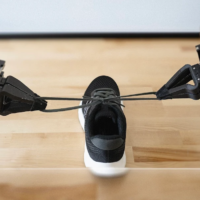
The European Space Agency (ESA) has launched two satellites as part of the Proba-3 mission. The first satellite will act as an artificial eclipse by blocking the Sun, casting a controlled shadow onto the second satellite to study solar winds—streams of plasma emanating from the Sun’s corona.
Unlike Earth-based observations, where solar eclipses last mere seconds to a few minutes, Proba-3’s coronagraph will enable continuous observation of the Sun’s corona for up to six hours at a time, capturing images every two seconds.
This extraordinary feat requires the satellites to maintain an exact distance from each other with millimeter-level precision throughout the mission.
Key Technologies:
- High-precision formation flying: Achieved through a laser-guided focus system and low-power thrusters.
- Mission Objective: Beyond solar studies, the mission aims to test a high-accuracy group piloting system under real-space conditions.
The Proba-3 mission is a significant step forward in both solar science and satellite coordination technologies. The project cost ESA €200 million, underscoring the agency’s investment in cutting-edge aerospace innovation.










